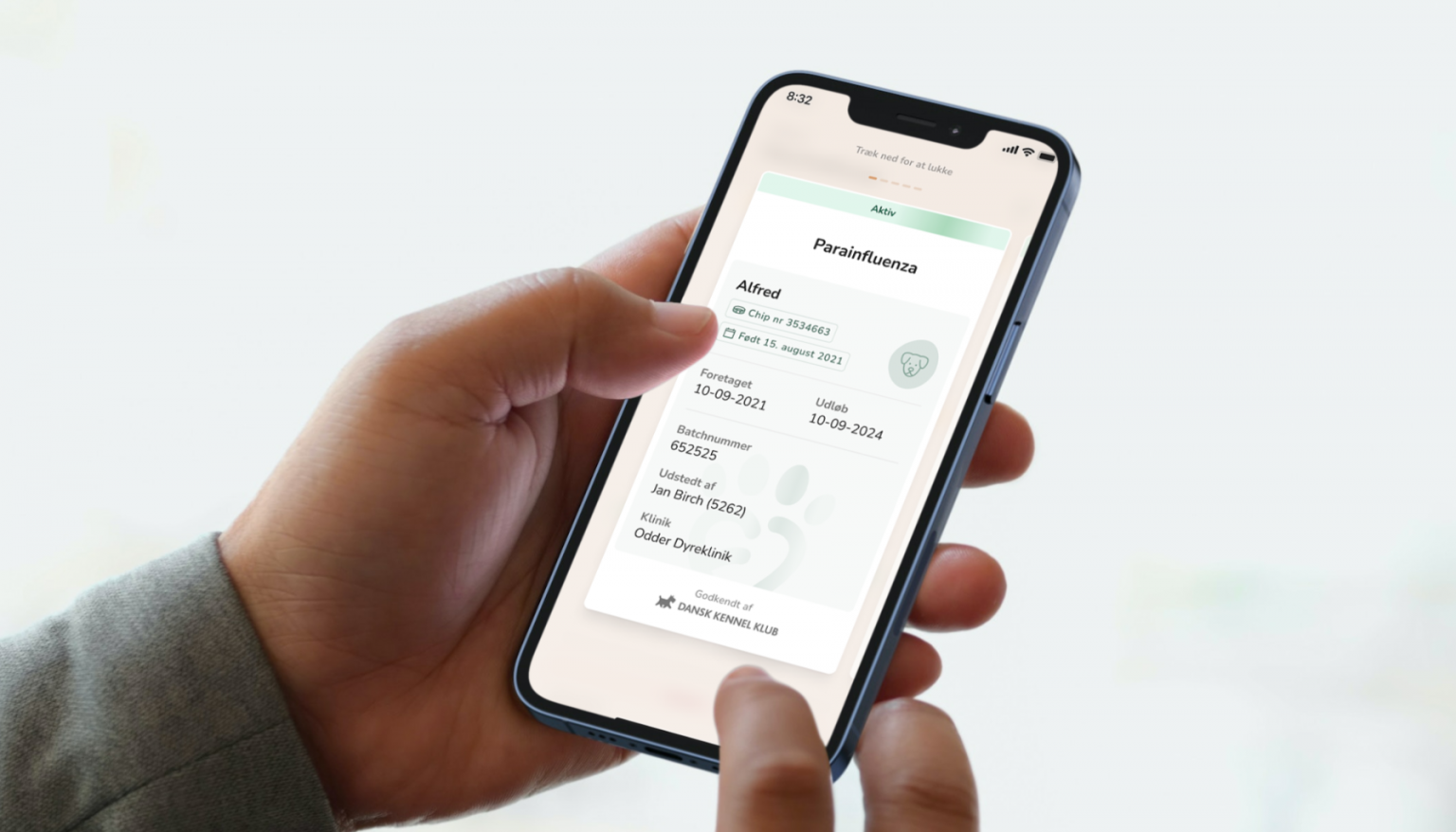Business Developer | Nicolai Errebo Birch 💻
Business Development





Role : Business Developer
Approach : The Design Thinking Process
Client : Startup
Year : 2024
Category : App
Toolkit :
Market Research
Stakeholder Interviews
User Personas
Competitive Analysis
Observational Studies
Problem Statement Articulation
Value Proposition Development
Scope Definition
Stakeholder Alignment
Requirement Gathering
Brainstorming Sessions
Concept Development
Feasibility Analysis
Prioritization Matrix
Stakeholder Feedback
Rapid Prototyping
User Interface Design
Usability Testing Plan
Iterative Development
Cross-functional Collaboration
User Testing
A/B Testing
Performance Metrics
Feedback Loop
Market Validation
Enhancing veterinary communication: Our digital solution’s journey in Aarhus, Denmark.
During my master’s degree, I had the privilege of co-creating a startup alongside four colleagues. Our mission was to spearhead a digital transformation in the veterinary industry. We set our sights on transforming the traditional pet health management approach by introducing a digital platform that would serve as a modern counterpart to the age-old pet health book. This narrative delves into the thought process behind our venture, the challenges we sought to address, and the milestones we achieved, all of which are illustrated through a Figma prototype. It’s pertinent to mention that our insights are primarily drawn from the Danish market.
The app was designed to be the ultimate health assistant for pet owners, transitioning from conventional paper documents to a digital solution that ensures all necessary information is readily accessible. It provided a comprehensive overview, reminders, and facilitated easy access to crucial pet health information with just a few clicks. Our inaugural feature was a digital vaccination card, simplifying the management of pet health records. Our goal was to modernize and enhance the way pet health documents and vital information are stored and managed. We paid special attention to understanding pet owners’ needs and desires, recognizing the importance of meeting the evolving expectations brought about by digitalization. Consequently, we developed an extensive app that streamlines the management of pet health and wellbeing.
According to Vial (2019), digital transformation is driven by disruptions stemming from changes in customer behavior and expectations, the competitive landscape, or data access. Within this domain, a noticeable shift in customer expectations has been observed, with an increasing demand for more technologically advanced solutions similar to those in the healthcare sector. This shift necessitates a change in digital business and transformation strategies among industry players to generate value through digital platforms and ecosystems. In the context of multi-sided platforms (MSP), Vial (2019) highlights that one of three critical capabilities remains underexplored in digital transformation literature and information systems studies – integrative capabilities. These are becoming increasingly fundamental for businesses, organizations, and industries at large, especially given the growing complexity and significance of value networks (VN) in value creation.
The development of this app was grounded in a keen interest in exploring how an MSP (in this case, the app) could support digital transformation within the domain’s digital ecosystem. We aimed to investigate how stakeholders across the board communicate and whether enhanced coordination could generate value for the domain’s key interest groups.
From diverse roles to unified goals: Summarized in Business Development
Despite being one of five co-owners of the startup, roles in such an environment are often fluid and multifaceted. Without substantial resources or significant financial backing, we were required to tackle challenges as they arose, embracing whatever roles were necessary. Predominantly, I functioned as a Business Developer. However, “Business Development” is a term that encompasses a wide range of activities and can mean different things depending on whom you ask. It’s essentially an umbrella term that covers various aspects of growing a business. My role specifically encompassed the following key areas within business development:
These sub-areas of Business Development cover a wide spectrum of activities. My tasks ranged from developing our website, designing specific prototypes, securing investments, to visiting veterinarian clinics across Denmark.
Embracing flexibility: Our iterative approach
Our development process was a deep dive into the Design Thinking methodology, encompassing its five phases: Empathize, Define, Ideate, Prototype, and Test. Far from a linear journey, our path resembled more of an intricate dance—moving back and forth between stages, allowing flexibility and a dynamic approach to innovation. This iterative cycle was not just a methodology but became our compass in navigating the complex landscape of the veterinary industry.
Initiated during our master’s studies, our first step was to gather insights directly from the field. We aimed to uncover the pains, gains, and customer jobs within the veterinary sector, using Alexander Osterwalder and Yves Pigneur’s Value Proposition Canvas as our guide (Osterwalder & Pigneur, 2010). Our data collection was rooted in the framework proposed by Hevner et al. (2004), which emphasizes the integration of rigor, relevance, and design cycles. This approach led us to conduct exploratory research, literature reviews, semi-structured interviews, focus groups, and observations, enriching our understanding and refining our focus with each iteration.
As insights flowed in, they informed the creation of design prototypes, further developed by our team’s software engineers. This stage was crucial, turning abstract ideas into tangible solutions that could be interacted with and evaluated. Our journey through Design Thinking was highly iterative, constantly challenging us to refine our focus and clarify our vision. The challenge of pinpointing a singular direction amidst a sea of possibilities within the veterinary industry was daunting. Yet, as we navigated through the Design Thinking process repeatedly, our path became clearer, and our solutions more targeted.
Identifying the core problems to address was a turning point. By honing in on specific pains and needs of our target audience, we streamlined our app, cutting away the “nice-to-have” features to focus solely on essential, value-creating functionalities. Embracing a Minimal Viable Product (MVP) philosophy, we launched early, aiming to deliver maximum value with the least complexity. This approach not only expedited our time to market but also provided real-world feedback to fuel further iterations. Our development process, though marked by challenges and constant learning, was a testament to the power of resilience, flexibility, and a user-centered approach in crafting solutions that make a difference.
Digitalizing pet health management: Our approach to simplifying pet care.
In our attempt to contribute meaningfully to the pet care ecosystem, we’ve developed an application aimed at simplifying the lives of pet owners. This tool is designed with the hope of making a small yet significant difference in how pet owners manage their pets’ healthcare—tracking treatments, vaccinations, and facilitating smoother communication with veterinaries.
Recognizing the challenges faced by pet owners in managing their pets’ health records and communication needs, our app seeks to offer a streamlined, digital solution. It’s our attempt to enhance the convenience of keeping up with essential pet health care activities, such as treatments and vaccinations, and improving communication channels between pet owners and their veterinarians.
We encourage you to explore the app’s prototype via the link to Figma provided on this page. This interactive preview allows you to navigate through the app’s features as if you were a pet owner using it in real life. While our solution is but a small step towards better pet healthcare management, we believe it can make a meaningful impact on making pet care tasks more manageable.
Our journey in developing this app has been guided by a goal to serve the community of pet owners and professionals in the veterinary field. By closely listening to their experiences and feedback, we’ve tailored our app to address the needs related to tracking pet health milestones and facilitating effective communication with veterinarians. We invite you to explore our prototype and see how it might ease the management of your pet’s health care needs. For those with pets, the full version of our app is available on both the App Store and Google Play. This version enables you to manage your pet’s healthcare records fully and communicate with your veterinarian more efficiently.
Hevner, A.R. et al. (2004) ‘Design Science in Information Systems Research’, MIS Quarterly, 28(1), pp. 75–
105.
Osterwalder, A., & Pigneur, Y. (2010). Business Model Generation: A Handbook for Visionaries, Game Changers, and Challengers. John Wiley & Sons.
Schreckling, E. and Steiger, C. (2017) ‘Digitalize or Drown’, in Shaping the Digital Enterprise: Trends and Use
Cases in Digital Innovation and Transformation, pp. 3–27. doi:10.1007/978-3-319-40967-2_1.
Vial, G. (2019) ‘Understanding digital transformation: A review and a research agenda’, The Journal of
Strategic Information Systems, 28(2), pp. 118–144. doi:10.1016/j.jsis.2019.01.003.
